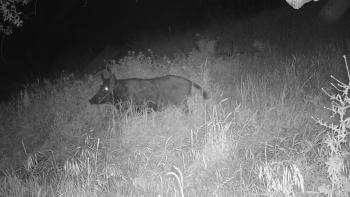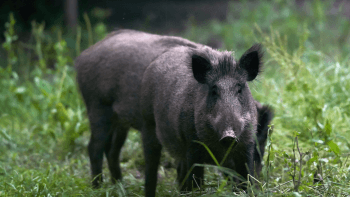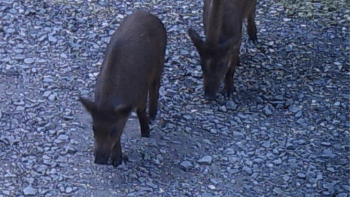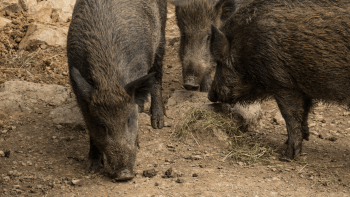
Feral Pigs
Managing Populations to Protect People & Nature
About Feral Pigs
What are feral pigs, and how did they get to the Bay Area?
Feral pigs, also known as wild pigs or wild hogs, are domestic pigs that have escaped or been released into the wild and have adapted to living in a natural environment. Their presence in the Bay Area is due to a few factors:
- Early European settlers brought pigs to the area.
- Pigs have escaped from farms over the centuries.
- Some pigs have bred with Eurasian wild boars, which were introduced for sport hunting.
Why is it important to manage feral pig populations?
- Public Health & Safety: Feral pigs are very aggressive, especially when they feel threatened, which poses a danger to human safety. Pigs can also cause traffic collisions when they wander onto roadways. Feral pigs can also spread diseases that affect both people and wildlife.
- Protect the environment: Feral pigs can cause significant environmental impacts. They disrupt wildlife habitats by trampling vegetation and rooting for food, which leads to loss of native plant species and soil erosion. Pigs also compete with native wildlife such as deer for food which can cause local wildlife populations to decline.
- Support Local Farmers & Economies: Feral pigs also damage crops which can lead to economic loss for farmers.
Pig Management
In 2025, the Open Space Authority initiated a feral pig management project. This project includes working with contracted professionals to trap sounders (groups) as a humane, effective and ethical way to control feral pig populations on lands that are owned or managed by the agency. Staff continue to document the activities of feral pigs and the damage they cause to resources to develop the most effective and humane program to reduce their impacts on the land, protect public health and safety, preserve critical habitat and protect endangered plants and animals.
Frequently Asked Questions
In the News

Feral pigs are going “hog wild” across the San Francisco Bay Area—and wildlife officials are ramping up their efforts to stop the destructive creatures.
A steady increase in the population of wild pigs — a marauding, non-native animal that can grow sharp tusks and weigh 250 pounds or more — is causing growing problems for parks, water districts and homeowners across the Bay Area.

From the South Bay to the East Bay reports of sightings and damage from feral pigs are on the rise. They're destroying yards and wildlands and some agencies are hiring hog removal services.

Weighing up to 200 pounds, California’s wild pigs live in 56 out of 58 counties. These hybrid creatures — part domesticated pig, part wild boar — have been wreaking havoc throughout the state for the past century, tearing up sensitive habitats and increasingly, posing a safety hazard to humans.
